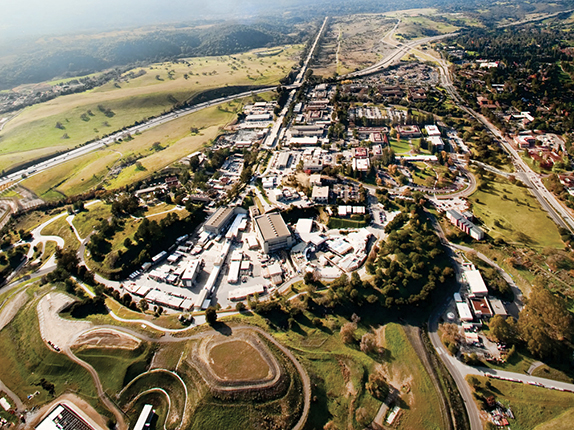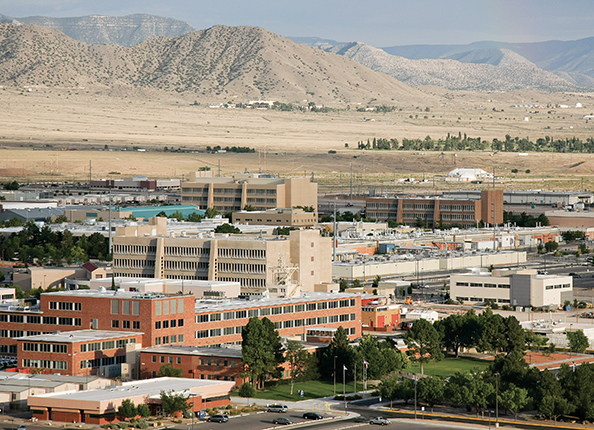Can a trusting relationship between DOE and its labs be restored?
DOI: 10.1063/PT.3.3490
The US Department of Energy and the contractors that manage its 17 national laboratories have begun mending a relationship that both sides and several advisory commissions have acknowledged has broken down over time. But with the advent of a new administration and the departure of the rapprochement’s primary champion, former Energy secretary Ernest Moniz, it’s an open question whether the momentum achieved over the past year will be sustained.
Beginning with a commission chaired by former Motorola chairman Robert Galvin in 1995, dozens of reports have drawn attention to a longstanding deterioration in DOE–contractor relations; that erosion was both caused and worsened by increased micromanagement of the labs. Steps toward reform finally began in earnest following an October 2015 report by the Commission to Review the Effectiveness of the National Energy Laboratories (CRENEL). Moniz’s attention provided further impetus.
A maze of burdensome, often duplicative, and sometimes conflicting DOE directives to its contractors has built up over decades. Moniz ordered reviews of the directives, instituted an annual lab-planning process, and brought back to life the boards of top agency and lab officials. He also initiated two experiments: a radically new contract at SLAC National Accelerator Laboratory and the relaxation of a half dozen of the most burdensome contractor requirements at Fermilab.
The contract reforms generally aim to restore much of the historical model of the government-owned, contractor-operated (GOCO) lab: DOE sets forth its R&D program needs and largely leaves its contractors to manage the work. The model was established during the Manhattan Project by the Department of War and the University of California, which operated what became Los Alamos National Laboratory. Today, contractors run each of the labs except the National Energy Technology Laboratory, which is operated by DOE employees.

An experimental contract at SLAC has replaced many Department of Energy rules and regulations with Stanford University’s own processes and procedures.
SLAC

Increasingly over recent decades, DOE oversight has intensified, and orders and rules have proliferated. The changes occurred largely in response to management lapses in lab safety and security and to congressional scrutiny of those shortfalls. Today, the GOCO relationship has evolved to what the CRENEL report called “transactional.”
As the contractor performs the R&D, it is evaluated annually by DOE on adherence to detailed checklists of procedures rather than on results. The management and operating contracts can now run to 600 or more pages, compared with as few as 30 pages three decades ago, notes William Madia, vice president for SLAC at Stanford University, which operates the accelerator lab. “With that many pages, everybody can find a way out or blame the other party,” he says.
“We had three Buy America Act [clauses] in our contract, and two highly conflicting fee clauses,” Madia says. Provisions were simply added on year after year, he says, and “nobody did a holistic scrub.”
Revolution at SLAC
The CRENEL report acknowledged that DOE regulations are appropriate for classified research, for working with radioactive materials and other hazardous substances, and for other specialized lab functions. But ordinary administrative functions could readily be left to the contractors’ own practices. That’s what has occurred with the completely revamped contract that took effect at SLAC in October 2016.
During 10 months of negotiations, says Madia, a Stanford-SLAC-DOE team reviewed the 223 DOE orders line by line to see “what works, what doesn’t work, what’s redundant, what doesn’t apply, what’s relevant, and what’s duplicative.” The process distilled “only those things that we collectively thought were important and necessary at SLAC.” For example, Stanford’s procurement procedures, which employ best commercial practices, supplanted DOE’s. So, too, did the university’s policies on human resources, which provide flexibility to offer salaries commensurate with national trends. Stanford’s cybersecurity policies and procedures, which befit its Silicon Valley location, were selected. The university’s policies were either expressly substituted for DOE’s or incorporated by reference. On the other hand, DOE’s order governing accelerator operations, for which Stanford has no counterpart, was retained.
The overarching benefit of the new contract is a dramatic reduction in paperwork, says Madia. “In my experience, too much paper makes people think less.”
“We stepped back, and Stanford and SLAC stepped up,” says Paul Golan, manager of the DOE site office at SLAC. “The most significant change is that the contractor has taken on more of the responsibility and is using more of their systems. And they are in some ways held to a higher standard. We’re saying to them, ‘We are going to hold you accountable for what you said you will do.’ ”
Golan says that the new contract “memorializes” many of the changes that had already been under way. “We rely on the contractor’s systems and put the responsibility on them to perform,” he says, “rather than them giving me 500 metrics that we track, and as long as all these metrics stay green we’ve done our job by checking the box.” Audits and assessments have changed from ensuring contractor adherence to procedures, checklists, and reports to focusing on actual work performance.
The new contract exempts SLAC from 25 orders formally known as DOE acquisition regulations, Golan says, and it gives Stanford authority to approve contracts valued up to $25 million. “We still go back and audit, but a lot of the time DOE preapproval takes weeks or months. Stanford has been around 125 years; we’re saying we are going to trust your processes, trust but verify.”
Deliberate progress
At Fermilab, DOE and Fermi Research Alliance, which operates the facility, are trying out what Moniz called an “evolutionary” approach to reform: Half a dozen orders that lab contractors consider especially burdensome are being scaled back without modifying the contract. Spokespersons for Fermilab and DOE declined to provide specifics of that effort.
Other contractors, including the University of California, which manages or comanages Lawrence Berkeley, Lawrence Livermore, and Los Alamos National Laboratories, have experienced some improvements in their relationship with DOE in the past year without formal contract modifications. Kimberly Budil, vice president for national laboratory operations at UC, says that lab scientists used to need DOE’s approval for travel to conferences, and high-level agency approval was needed when large numbers of employees wanted to attend major meetings and conferences such as the March meeting of the American Physical Society. Today, DOE approval is required only in rare circumstances, she says.

The new contract at Sandia National Laboratories features a fee structure that is less performance-based, a change that is expected to encourage a partnering relationship between DOE and the lab.
SANDIA NATIONAL LABORATORIES

Still, lots of micromanagement remains. Budil points to a 93-page DOE order on emergency management issued just last August. Among other details, the directive specifies which responders must be trained, how frequently refresher training must be given, and the number of annual training exercises required. “This goes well beyond telling us what needs to be done and well into dictating exactly how these things should be accomplished,” Budil says.
Audits also need rationalizing, she says. “At one point we totaled up the number of audits at Lawrence Livermore in a year; it was an extraordinary number, and a large number of them are different groups of people coming in and looking at the same thing.” In some areas, several DOE directives deal with minor variants of the same thing. “Like any policy framework, over time you tend to build up extra stuff that’s not necessarily still salient,” she notes.
Having all the labs’ auditors—the contractor’s, DOE’s, and often the DOE inspector general and the US General Accountability Office—agree on a single safety audit for, say, electrical operations would eliminate time-consuming redundancies, Budil says. And the UC labs have been seeking DOE approval to pursue International Organization for Standardization quality certifications and to adopt industrial safety standards issued by the Occupational Safety and Health Administration, as opposed to DOE’s unique, in-house requirements.
Ron Townsend, executive vice president of global laboratory operations for Battelle, which manages or comanages seven national labs, sees “a concerted effort on the part of Battelle and our counterparts at the [DOE site offices and headquarters] to address attitudes and behavior.” He adds: “When the contractor is performing, there’s less desire to get into the details of how we are doing things, and if we both have the right attitude and behaviors, we engender this mutual relationship of trust.”
In a 30 November letter to Moniz, CRENEL cochair T. J. Glauthier, a former deputy energy secretary, commended the progress made in revising DOE policies and practices on indirect costs, technology transfer, cybersecurity, human resources, and other issues. Glauthier pointedly noted that those efforts have involved the National Nuclear Security Administration, the semiautonomous branch of DOE that oversees the three nuclear weapons labs. As the largest and most complex labs in the system, the NNSA labs are subjected to the most DOE orders.
The contract awarded in December to a consortium headed by Honeywell for operation of Sandia National Laboratories features an increase to the base fee and a reduction in incentive fees for performance, relative to the previous contract held by Lockheed Martin. Glauthier says the change will deemphasize payment as a motivating factor and strengthen the partnership between DOE and the lab.
The Sandia contract doesn’t reduce the number of DOE orders. But Stephen Younger, who will become the lab director in May, expects that replication of management practices used by Honeywell at NNSA’s Kansas City plant will lead to less intrusive oversight. That facility, which manufactures nonnuclear components of nuclear weapons, is regarded as the model for minimizing DOE micromanagement in the NNSA system.
An uncertain path forward
Moniz explicitly required that SLAC’s revolutionary contract model be transferable to other labs, including the weapons labs. According to Madia, the model could easily be replicated at other nonweapons labs that have no nuclear materials or classified operations. Though he declined to name specific labs, Madia’s description fits Lawrence Berkeley, where Golan also is site manager. Golan wouldn’t comment about replicating the SLAC contract.
Implementing the SLAC model at larger, more complex nonweapons labs such as Oak Ridge, Argonne, and Pacific Northwest National Laboratories will take longer, and replicating it at the weapons labs will come even later, Madia predicts.
The uniform adoption of contract reforms is hindered by the fact that the labs fall under the oversight of different DOE divisions. Moreover, DOE site offices at each lab have broad discretion in interpreting and enforcing rules. “The [DOE] contracting officers at the sites are the final authority on a lot of the decision making around the actual operation of the site,” says UC’s Budil. “The contracting officer has a different perspective than the headquarters team, and the contracting officer often wins.” Although it’s logical to have the people in the field closest to the work make decisions, “it makes it hard to have a consistent approach,” Budil says.
For example, rules on hiring and compensation of top managers, which contractors consider particularly onerous, vary widely from one site to another. “There’s no fixed way it is done; it’s case by case,” Budil says. “There is a very competitive environment for technical talent” between the labs and industry, adds Younger.
Nobody should anticipate complete return to a 1950s-style GOCO contract. “We live in a different world than the 1950s; there is greater government oversight in nearly all aspects of life today,” says Younger. Townsend agrees. “I don’t worry so much about this mantra of returning to the GOCO model,” he notes. He instead asks, “Is there an equitable process to evaluate our performance in the context of effectively, efficiently, safely, and securely delivering on the mission outcomes that we signed up to do?”
More about the Authors
David Kramer. dkramer@aip.org
